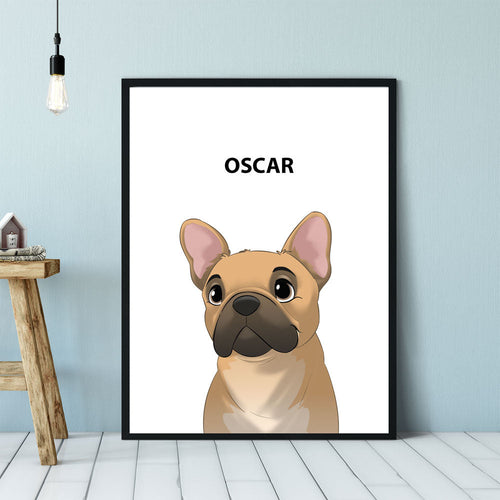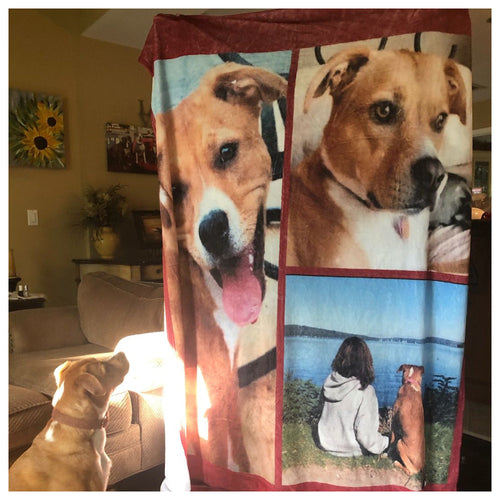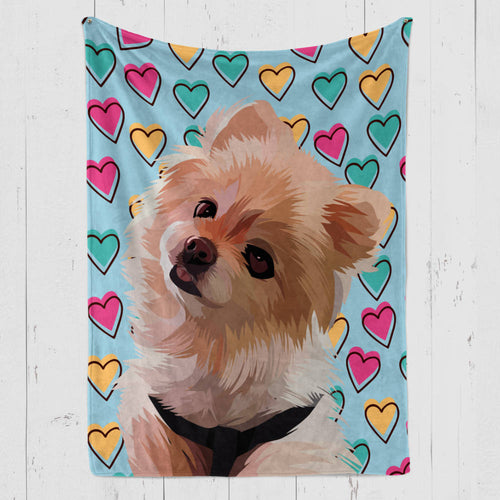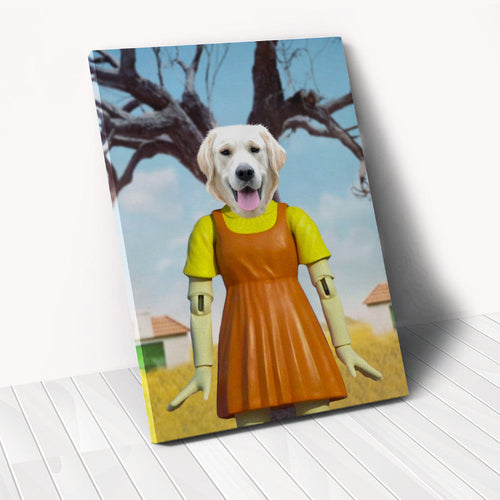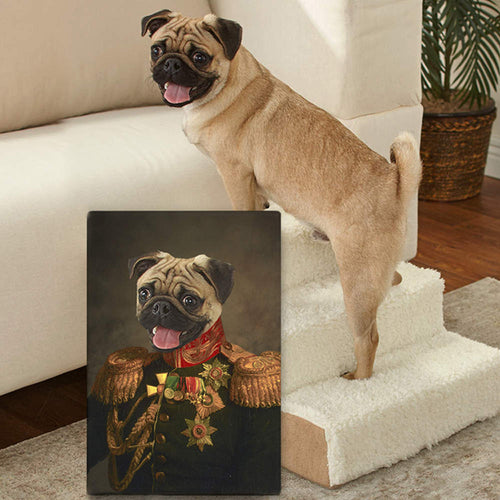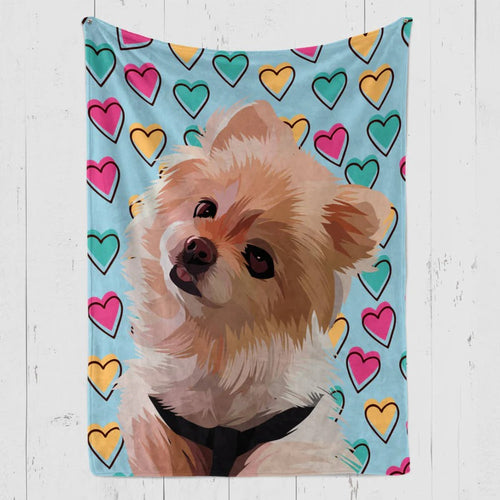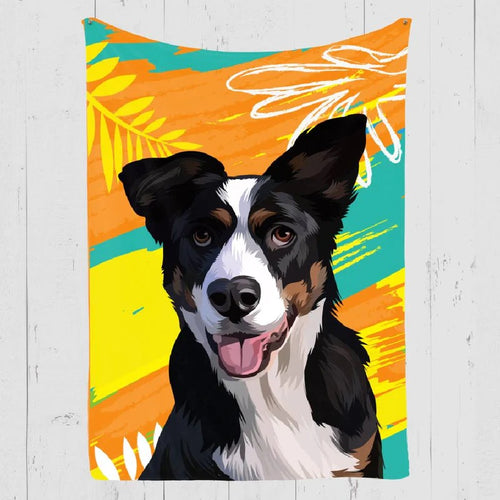
A fun and rewarding experience is when you adopt a new dog. One of the first problems every dog owner has, though, is potty training. Training your dog where and when to go to the bathroom is important whether they are puppies or older dogs.
Here is a complete guide to potty training your dog, covering everything from how to tell when your dog needs to go to the bathroom outside to how to deal with setbacks and accidents.
The importance of being consistent, knowing your dog's instincts, and using positive reinforcement will also be talked about. Yes, let's start the process of housebreaking your furry friend.
Steps of Toilet Training Your Dog
To toilet train your dog, you'll need to be patient, and consistent, and know exactly what he or she needs. To start with, you need to do the following:
1. Establish a Routine:
Routines are great for dogs. Set specific times to feed, play, and go to the bathroom. Making sure you stick to the same schedule every day will help your dog know when it's time to go to the bathroom.
2. Designated Potty Area:
Select a certain spot outside for your dog to go to the bathroom. This spot should be simple to get to and far from where your dog sleeps and plays.
3. Observe Your Dog's Behavior:
Pay close attention to how your dog acts. Dogs will often sniff, circle, or whine to let you know they need to go. When you see these signs, be ready to act.
4. Use Positive Reinforcement:
When your dog goes to the bathroom outside, immediately praise and reward them. The behavior you want to see more of is positively reinforced, like a treat or verbal praise.
5. Be Patient and Persistent:
Obviously, there can be risks, especially when you are learning how to do something for the first time. Be patient and do not hit or punish your dog when he has an accident. Instead, focus on rewarding good behavior.
6. Crate Training:
Crate training is a useful tool to have. To help them hold it until they get outside, a crate can help them learn to keep their den clean.
7. Regular Bathroom Breaks:
Regularly take your dog outside to go to the bathroom, like after meals, when it wakes up, and before bed. Younger puppies may need to go on more trips.
8. Clean Accidents Thoroughly:
If accidents happen inside, clean them up right away completely to get rid of any smell that might still be there. Dogs may be interested in the smell of leaky diapers.
9. Adjust Feeding Times:
Pay attention to when your dog eats. Most importantly, try to feed your dog at the same time every day. This will help you figure out when they need to go outside.
Signs Your Dog Needs to Toilet
For training to work, you need to know when your dog needs to go to the bathroom. Look out for these signs:
Sniffing the Ground:
Dogs regularly sniff the floor when they are looking for a suitable spot to take away.
Whining or Restlessness:
Some puppies grow to be tense or restless after they want to move.
Circling or Pacing:
Circular actions or pacing in a selected vicinity can indicate a want to relieve themselves.
Sudden Attention:
If your canine abruptly becomes interested in a selected nook of the room or door, it may be a signal that they want to head outside.
Scratching at the Door:
If your dog scratches or whines at the door, they will be trying to sign that they want to go out.
Sniffing Their Rear End:
Dogs may also sniff their very own rear cease when they want to head.
Squatting or Crouching:
The apparent signal that your dog wishes to go is once they begin squatting or crouching as if getting ready to remove.
Why Potty Training Is Important for Dogs
Potty training is not just about convenience; it’s important for your and your dog’s well-being and happiness. Here’s why:
Hygiene and Cleanliness:
Proper potty training keeps your home clean and odor-free. It prevents unsightly and unhygienic conditions indoors.
Health:
Maintaining a regular bathing routine helps prevent urinary tract infections and other health issues in dogs. It also analyzes their urine for signs of disease.
Bonding: The process of potty training involves spending time with your dog, teaching them, and praising them. As a result, your bond with your pet strengthens.
Behavioral Benefits:
A well-potty-trained dog generally has a better temperament and less anxiety. They understand boundaries and expectations, which leads to a more cohesive life.
Companionship:
With a trusted potty-trained dog you can take them on walks with confidence and socialize with other dogs and humans.
Peace of mind:
Knowing that your dog is trained to do his work outdoors gives him peace of mind, especially when you have guests or are traveling.
Teaching a Dog to Pee Outdoors
Training your dog to pee outside is an important part of potty training. Here’s a step-by-step guide to teaching your dog to pee outside:
1. Choose a Designated Area:
Choose a specific area in your yard where you want your dog to potty. Make sure it is easily accessible and away from high-traffic areas.
2. Establish a Routine:
Make a consistent schedule for bathroom breaks. Take your dog to a designated area at the same time each day after meals and before bedtime.
3. Use Verbal Cues:
When leading your dog to a designated area, use consistent phrases like "go potty" or "do your thing". Repeat the gesture when your dog has smelled it and is getting ready to be removed.
4. Wait Patiently:
Be patient and wait for your dog to leave. Avoid distractions and give them plenty of time to finish.
5. Praise and Reward:
As soon as your dog finishes, warmly praise and feed.
6. To Reiterate:
Consistency is key. If your dog follows this pattern, he will learn to associate a designated area with potty visits.
7. Prepare:
Always clean your dog’s back as soon as possible. This helps your dog provide a clean and pleasant environment for you and your family.
Dog Potty Training Schedule
Establishing a potty training program is essential to success. Here’s what you need to do:
Morning:
Take your dog out as soon as you wake up.
Before Bedtime:
Always take your dog outside at bedtime.
Night:
For small animals or dogs with small bladders, consider setting an alarm to allow them to go out once at night.
After Meals:
Take your dog outside for 15-30 minutes after meals.
Play Time:
If your dog has been playing hard, take him outside for a bathroom break afterward.
Remember that younger breeds have smaller bladders and may need as frequent bathroom breaks as older dogs.
Indoor Dog Potty Solution
In a few conditions, including excessive weather or constrained outdoor access, you may want to apply an indoor pot lid. Here are a few alternatives:
Indoor Grass:
Some corporations offer indoor grass that looks as if out of doors, giving your canine a natural finishing touch.
Garbage Cans:
Special trash cans with absorbent materials are designed for indoor use.
Puppy Urine Patches:
As cited earlier, a doggy urine patch can be used to provide a designated potty area inside the domestic.
Synthetic Turf:
Synthetic grass turf designed for puppies can be installed to create a chosen swimming area.
Follow the identical quality concepts whilst the usage of inner solutions. By following those standards and committing to the education software, you can efficiently potty train your canine and live in an easy, harmonious environment along with your bushy buddy.
Conclusion
Training your dog puppy is an important part of building a happy and healthy relationship with your dog. By understanding what your dog wants, making sure your training methods work with them.
Using lots of good reinforcement, you can train your dog to go to the bathroom outside on his own. But, don’t forget that information and patience are very important.
Also, remember that having boundaries is normal in everyone’s personality. You will find great comfort and happiness in your life together.
Frequently Asked Questions:
Within how many days can I potty train my dog?
The length of potty training varies depending on the dog’s age, breed, and routine. On average, it can take weeks to months to fully potty train a dog.
Are pee pads required to potty train dogs?
Yes, pee pads can be a useful tool, especially for dogs or in situations where there isn’t much space outside. However, the ultimate goal should be to turn your dog outside to eliminate it. Slowly approach the door and eventually use the shower as a temporary solution as you finish.
What if my dog meets an indoor accident?
If your dog has an accident indoors, remain calm, and gently interrupt them if they are caught in the act. Take them outside immediately to a designated potty area. Thoroughly clean the accident scene and eliminate odors that may attract them back to the same area. Avoid the cane, as it can confuse your dog.
What if my dog is stubborn and can’t stand potty training?
Even the most stubborn dogs can be trained with patience and constant positive reinforcement. Increase supervision, develop robust policies, and consider internship support as needed. Remember that all clients are different, and for some, improvement can take longer.
Latest Review on Woof Blankets
To have such a masterpiece by my side every day is a gift for me and my memories with Rex. Thank you WoofBlankets for such an opportunity to recreate his image on a blanket.Lara o’ Miguel US, California
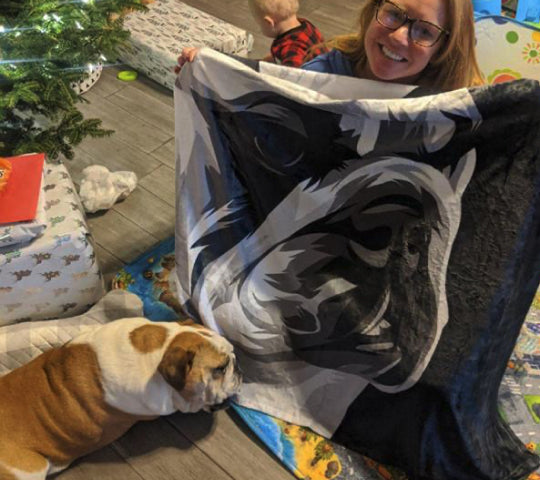
COLLECTION WORTH EVERY PENNY
BEST SELLERS
-
Woofy Single Color Custom Pet Blanket
![Woofy Single Custom Pet Blanket – Woof Blanket]()
- -41%
BlanketsSHOP NOW- Regular price
- from $64.95
- Sale price
- from $64.95
- Regular price
-
$109.95 - Unit price
- per
Sold out -
Exclusive Christmas Custom Pet Blanket
![Exclusive Custom Pet Blanket]()
- -39%
BlanketsSHOP NOW- Regular price
- from $69.95
- Sale price
- from $69.95
- Regular price
-
$114.95 - Unit price
- per
Sold out -
Christmas Custom Pet Blanket
![Christmas Custom Pet Blanket - Custom Dog Blankets]()
- -40%
BlanketsSHOP NOW- Regular price
- from $69.95
- Sale price
- from $69.95
- Regular price
-
$115.95 - Unit price
- per
Sold out -
Watercolor Pet Portraits
![]() SHOP NOW
SHOP NOW- Regular price
- from $59.95
- Sale price
- from $59.95
- Regular price
-
- Unit price
- per
Sold out -
Woofy Christmas Custom Dog Blanket
![Woofy Christmas Custom Dog Blanket]()
- -39%
BlanketsSHOP NOW- Regular price
- from $69.95
- Sale price
- from $69.95
- Regular price
-
$114.95 - Unit price
- per
Sold out -
Modern Pet Owner Portrait
![]()
- -32%
CanvasSHOP NOW- Regular price
- from $84.95
- Sale price
- from $84.95
- Regular price
-
$124.95 - Unit price
- per
Sold out -
Woof Splash Custom Pet Blanket
![Woof Splash Custom Pet Blanket]()
- -39%
BlanketsSHOP NOW- Regular price
- from $69.95
- Sale price
- from $69.95
- Regular price
-
$114.95 - Unit price
- per
Sold out -
The Admiral - Custom Pet Portrait
![The Admiral - Custom Pet Portrait Online]()
- NEW
- -25%
CanvasSHOP NOW- Regular price
- from $59.95
- Sale price
- from $59.95
- Regular price
-
$79.95 - Unit price
- per
Sold out -
Wings of Loyalty - Custom Pet Portrait
![]()
- NEW
CanvasSHOP NOW- Regular price
- from $59.95
- Sale price
- from $59.95
- Regular price
-
- Unit price
- per
Sold out -
Pet Memorial Custom Photo Collage Blanket
![Personalized pet memorial quilt with photos]()
- -41%
BlanketsSHOP NOW- Regular price
- from $64.95
- Sale price
- from $64.95
- Regular price
-
$109.95 - Unit price
- per
Sold out -
Celestial Paws - Custom Pet Portrait
![]() CanvasSHOP NOW
CanvasSHOP NOW- Regular price
- from $59.95
- Sale price
- from $59.95
- Regular price
-
- Unit price
- per
Sold out -
The Loyal Soul - Custom Pet Portrait
![]()
- NEW
SHOP NOW- Regular price
- from $59.95
- Sale price
- from $59.95
- Regular price
-
- Unit price
- per
Sold out -
Cartoonized Pet Portraits (New)
![Cartoonized Pet Custom Portraits Online]()
- -36%
SHOP NOW- Regular price
- from $59.95
- Sale price
- from $59.95
- Regular price
-
$93.95 - Unit price
- per
Sold out -
The French Sailor - Custom Pet Portrait
![]()
- -25%
CanvasSHOP NOW- Regular price
- from $59.95
- Sale price
- from $59.95
- Regular price
-
$79.95 - Unit price
- per
Sold out -
The Policeman - Custom Pet Portrait
![]()
- NEW
- -25%
CanvasSHOP NOW- Regular price
- from $59.95
- Sale price
- from $59.95
- Regular price
-
$79.95 - Unit price
- per
Sold out -
The General - Custom Pet Portrait
![]()
- NEW
- -25%
CanvasSHOP NOW- Regular price
- from $59.95
- Sale price
- from $59.95
- Regular price
-
$79.95 - Unit price
- per
Sold out -
Woof Love Custom Pet Blanket
![Woof Love Custom Pet Blanket]()
- -39%
BlanketsSHOP NOW- Regular price
- from $69.95
- Sale price
- from $69.95
- Regular price
-
$114.95 - Unit price
- per
Sold out -
Summer Time Custom Pet Blanket
![Summer Time Custom Pet Blanket]()
- -39%
BlanketsSHOP NOW- Regular price
- from $69.95
- Sale price
- from $69.95
- Regular price
-
$114.95 - Unit price
- per
Sold out -
The Ambassador - Custom Pet Portrait
![The Ambassador - Custom Pet Portrait Online]()
- NEW
- -25%
CanvasSHOP NOW- Regular price
- from $59.95
- Sale price
- from $59.95
- Regular price
-
$79.95 - Unit price
- per
Sold out -
Fall In Love Custom Pet Blanket
![Fall In Love Custom Dog Blanket]()
- NEW
- -39%
BlanketsSHOP NOW- Regular price
- from $69.95
- Sale price
- from $69.95
- Regular price
-
$114.95 - Unit price
- per
Sold out -
The Classy Lady - Custom Pet Portrait
![The Classy Lady]()
- NEW
- -25%
CanvasSHOP NOW- Regular price
- from $59.95
- Sale price
- from $59.95
- Regular price
-
$79.95 - Unit price
- per
Sold out -
The Duke - Custom Pet Portrait
![The Duke - Custom Pet Portrait]()
- NEW
- -25%
CanvasSHOP NOW- Regular price
- from $59.95
- Sale price
- from $59.95
- Regular price
-
$79.95 - Unit price
- per
Sold out -
Dog In Suit- Custom Pet Portrait
![Dash Dog In Suit- Custom Pet Portrait Online]()
- NEW
- -25%
CanvasSHOP NOW- Regular price
- from $59.95
- Sale price
- from $59.95
- Regular price
-
$79.95 - Unit price
- per
Sold out -
The Princess - Custom Pet Portrait
![]()
- NEW
- -25%
CanvasSHOP NOW- Regular price
- from $59.95
- Sale price
- from $59.95
- Regular price
-
$79.95 - Unit price
- per
Sold out -
Modern Pet Portrait with One Mug
![Modern Pet Portrait with One Mug]()
- -25%
Print MaterialSHOP NOW- Regular price
- from $99.95
- Sale price
- from $99.95
- Regular price
-
$133.95 - Unit price
- per
Sold out -
The Aristocrat - Custom Pet Portrait
![The Aristocrat - Custom Pet Portrait At Best Price]()
- NEW
- -25%
CanvasSHOP NOW- Regular price
- from $59.95
- Sale price
- from $59.95
- Regular price
-
$79.95 - Unit price
- per
Sold out -
Single Color Custom Blanket with 1 Mug
![Single Color Custom Blanket with 1 Mug]() BlanketsSHOP NOW
BlanketsSHOP NOW- Regular price
- from $99.95
- Sale price
- from $99.95
- Regular price
-
- Unit price
- per
Sold out -
Single Color Custom Blanket with 2 Pillows
![Single Color Custom Pet Blanket with 2 Pillows]()
- -21%
BlanketsSHOP NOW- Regular price
- from $99.95
- Sale price
- from $99.95
- Regular price
-
$125.95 - Unit price
- per
Sold out -
The Dog in Suit Custom Pet Mug
![]()
- -20%
MugsSHOP NOW- Regular price
- $39.95
- Sale price
- $39.95
- Regular price
-
$49.95 - Unit price
- per
Sold out -
Angel Custom Pet Mug
![]()
- -20%
MugsSHOP NOW- Regular price
- $39.95
- Sale price
- $39.95
- Regular price
-
$49.95 - Unit price
- per
Sold out -
This Human Belongs To - Custom Pet Mug
![]()
- NEW
- -20%
MugsSHOP NOW- Regular price
- $39.95
- Sale price
- $39.95
- Regular price
-
$49.95 - Unit price
- per
Sold out -
It's Not Dog Hair Custom Pet Mug
![]()
- NEW
- -20%
MugsSHOP NOW- Regular price
- $39.95
- Sale price
- $39.95
- Regular price
-
$49.95 - Unit price
- per
Sold out -
My Dog Is My Valentine Custom Pet Mug
![]()
- NEW
- -20%
MugsSHOP NOW- Regular price
- $39.95
- Sale price
- $39.95
- Regular price
-
$49.95 - Unit price
- per
Sold out -
3 Photos With Message Custom Pet Mug
![]()
- NEW
- -20%
MugsSHOP NOW- Regular price
- $39.95
- Sale price
- $39.95
- Regular price
-
$49.95 - Unit price
- per
Sold out -
My Valentine Has Four Legs- Personalized Mugs
![]()
- NEW
- -20%
MugsSHOP NOW- Regular price
- $39.95
- Sale price
- $39.95
- Regular price
-
$49.95 - Unit price
- per
Sold out -
Dog Mamma Custom Pet Coffee Mug
![]()
- -20%
MugsSHOP NOW- Regular price
- $39.95
- Sale price
- $39.95
- Regular price
-
$49.95 - Unit price
- per
Sold out -
Uncle Sam - Custom Pet Portrait
![]()
- NEW
- -25%
CanvasSHOP NOW- Regular price
- from $59.95
- Sale price
- from $59.95
- Regular price
-
$79.95 - Unit price
- per
Sold out -
The Revolutionary Emperor - Custom Pet Portrait
![]()
- NEW
- -25%
CanvasSHOP NOW- Regular price
- from $59.95
- Sale price
- from $59.95
- Regular price
-
$79.95 - Unit price
- per
Sold out -
The Princess Paws - Custom Pet Portrait
![]()
- -25%
CanvasSHOP NOW- Regular price
- from $59.95
- Sale price
- from $59.95
- Regular price
-
$79.95 - Unit price
- per
Sold out -
The Dark Crusader Knight - Custom Pet Portrait
![]()
- -25%
CanvasSHOP NOW- Regular price
- from $59.95
- Sale price
- from $59.95
- Regular price
-
$79.95 - Unit price
- per
Sold out


